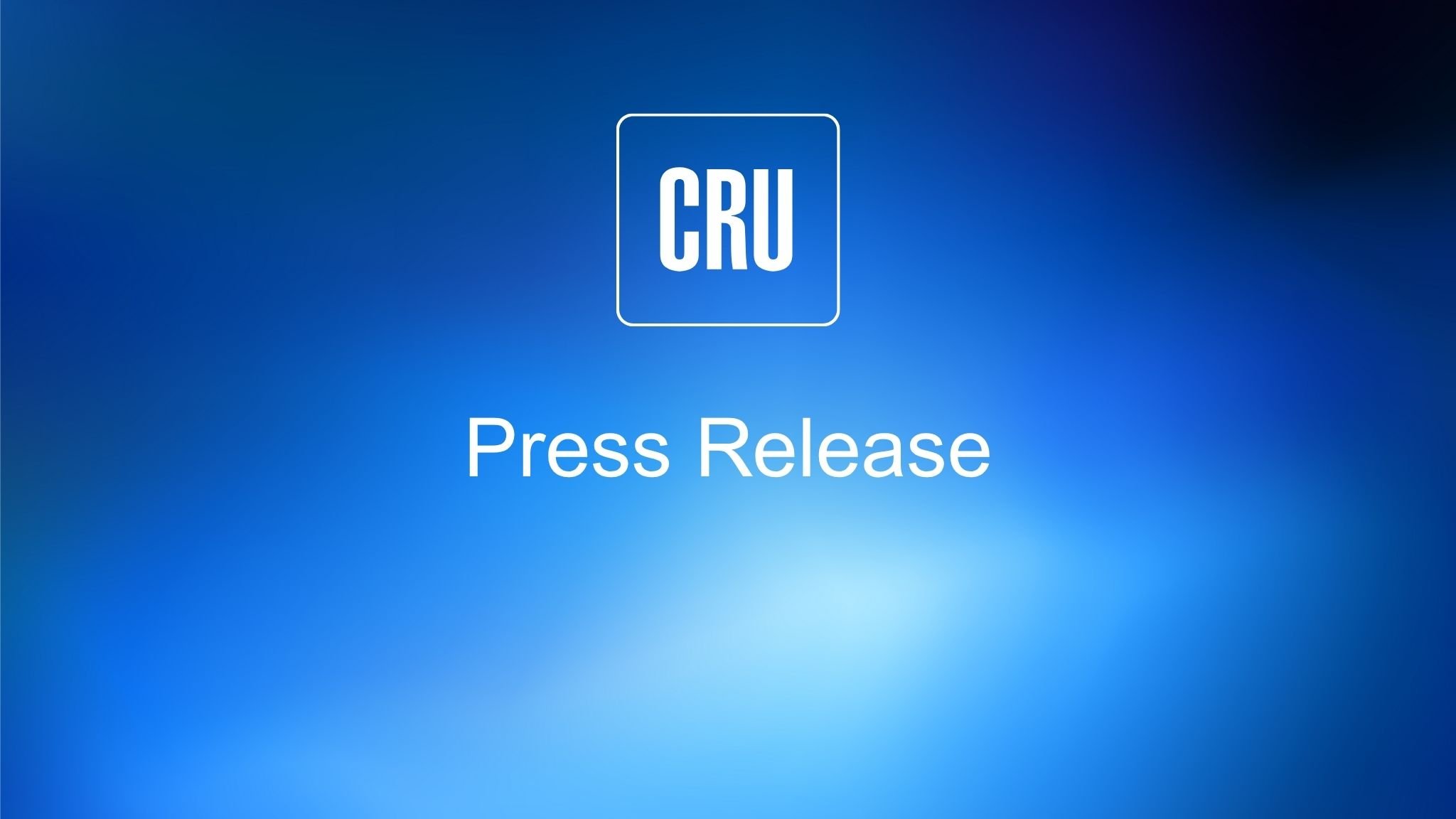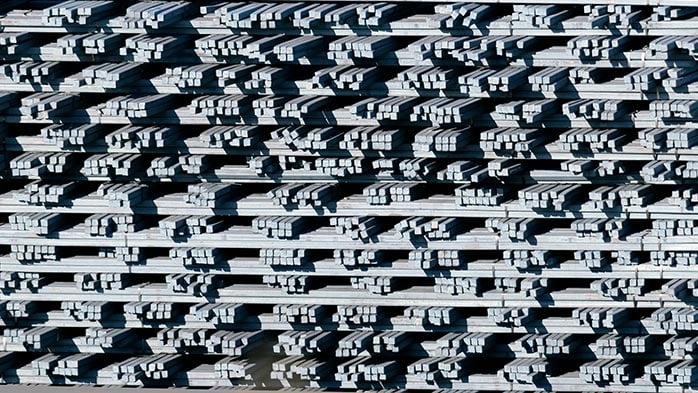CRU Consulting delivered a detailed strategic analysis of the market for ‘green’ steel across a number of regions together with recommendations on product mix strategy for a potential new entrant to the steel industry, enabling preliminary investment decisions to be made.
The steel industry accounts for 7% of global Greenhouse Gas (GHG) emissions. There is now significant pressure from policy makers, regulators and end-use consumers of steel to reduce CO2 emissions from steelmaking from the current global average of 2.0 t CO2/ tonne of steel produced to much lower levels. Consequently, numerous steelmakers worldwide have announced commitments and plans to transition to green or greener steel making technologies, many with the ultimate goal of achieving net zero carbon steel production.
Along with incumbents, the advent of new technologies, such as hydrogen-based steelmaking, and the consequent requirement for abundant, reliable and low-cost sources of renewables is attracting new entrants and new investment into the industry. Such companies may have access to one or more of the key ingredients for success in the new era of steel decarbonisation, be it access to high grade iron ore (needed for the production of Direct Reduced Iron or DRI), low-cost renewable energy resources or competencies in the production of hydrogen.
One such potential new entrant engaged CRU Consulting to undertake a thorough and comprehensive analysis of the steel market, including supply and demand forecasts, long term price forecasts at a regional and product level. This provided a robust platform from which to investigate the future market potential for ‘green’ steel – a market that does not yet exist in any significant volumes. This presented a number of challenges to quantifying, by region and product, the future demand for green steel and what premiums such products could command – a necessary pre-requisite before recommendations on product mix strategy and regional markets to target could be made.
CRU’s green steel demand forecast assisted in assessing market attractiveness for the client
Having enabled our client to understand the market fundamentals for conventional or ‘brown’ steel at a granular level across both flat and long products, multiple regions and for intermediate products such as DRI, CRU developed a multi-factorial assessment tool to identify the most attractive market segments for green steel for the project to target. From this, CRU was able to recommend different optimal product mix options for the proposed asset configuration under different strategic priorities for the project and its investors. CRU’s report provided a robust and independent analysis of the market, through which the client was able to better engage potential strategic partners and investors to the project and was a key input to the pending preliminary investment decision of the client.
A summary of the key findings is outlined below.
Methodology – How do you analyse a market that does not yet really exist?
The key challenge presented by this engagement was to develop an approach and methodology to forecasting the future demand and price premium for a market that doesn’t currently exist – green steel. Demand for such products will not create new demand for steel per se but needs to be considered as a substitute for existing, conventional or ‘brown’ steel. CRU has a lot of experience of analysing the threat / potential for substitutes both within and between different commodities so was quickly able to establish an appropriate conceptual framework through which to quantify the scale of potential demand for green steel. In summary this required CRU to:
- Research the steel end-use sector (e.g., automotive and construction etc.) Scope 3 emissions reduction targets
- Quantify the proportion of inbound Scope 3 emissions accounted for by steel purchases, for each end use sector – the so called ‘materiality’ test.
- Assess the sensitivity of potentially increased costs (though increased production costs and /or a green premium) from purchases of steel vs the total cost of the steel containing good or building representative of each end-use sector – the so called ‘cost sensitivity’ test.
For this, a combination of top-down and bottom-up modelling was deployed with key assumptions informed by extensive primary research, interviewing end-users and other market participants.
Alongside a supply side analysis of the production of green steel to come on stream, a supply/ demand balance for green steel in each region was able to be forecast, together with sensitivities within ranges of probabilities. In many regions it was shown that there is potential for significant supply deficits for green steel which will be a key driver of green premium and for how long any such premium might last.
Quantifying the green premium required a number of factors to be taken into account
To be able to quantify the green premium in each region, by product, required CRU to develop a methodology that took into account:
- Market Pull – the magnitude of demand for green steel (at a region/ product level), the projected supply / demand balance and the price and availability of substitutes. This sets an upper bound for any green premium.
- Cost of decarbonising – Depending on the most likely technology routes for producing green steel in any given region, the cost of decarbonisation (both opex and capex) will vary. Assuming domestic incumbent producers are the first to respond to the demand for green steel, the starting point for decarbonisation could be different in different regions. For example, the dominant technology route in the GCC region is natural gas-based DRI/EAF steelmaking, not BF-BOF as is the case in other regions. This sets a lower bound for the green premium.
This framework, backed by primary research and other CRU data, enabled CRU to forecast upper and lower bound values for green premia by product and region.
All of this analysis, enabled by CRU’s innovative approach to developing bespoke methodologies to address specific client briefs, was critical to informing a classical strategic portfolio analysis approach to identifying optimum product mix for the client and modelling the revenue line for the project. This, combined with CRU’s capabilities in steel cost modelling enabled profit margins of each strategic option to be quantified and compared along with the relative competitive position of the project to industry peers
CRU’s work enabled preliminary investment decisions for the project to be made
Along with an intense period of market and strategic analysis, CRU’s team collaborated with the client and its other advisers throughout. Regular progress updates were given together with hosting a one-day workshop with the client team at CRU’s offices to review interim findings and help formulate strategic options for the project prior to a full evaluation of these options and drafting of the final report and recommendations.
CRU also presented the main findings and recommendations of its report to a number of potential strategic partners to the project. This enabled preliminary investment decisions to be made and the next phase of the project’s development to be determined.
How can we help?
Whether you are from the buy-side or sell-side of the green steel equation, an existing producer or potential new entrant or investor – could your business or organisation benefit from a more detailed and tailored look at the rapidly evolving market for green steel? We look forward to exploring with you how CRU Consulting can help you fill in the missing pieces of your own green steel ‘jigsaw’.
















